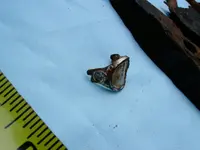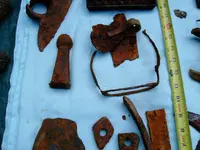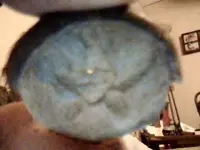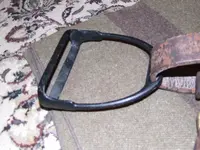Yes, your button with vertical stripes in the shield on the eagle's chest is a civil war US Army button, issued from 1854 to 1874, for use on Enlisted-men's uniforms (private, corporal, sergeant). At that time, the buttons for US Army Field-grade Officers had the single-letter initial of their branch of service (such as Artillery or Cavalry or Infantry) in the center of the shield on the eagle's chest.
The iron-bodied heart-shaped padlock with a brass keyhole-cover marked simply "Patent" can date anywhere from the 1700s through the early 20th Century.
Unfortunately, your stirrup cannot be dated only to the civil war, nor certified as a Military-issue one. That same form was used by civilians from the early-1800s into the early 1900. In your photos it looks thin-bodied, which means "light duty" construction, for civilian use. Military-issue ones were thicker-bodied. Compare yours with this iron US Model-1904 McClellan Saddle stirrup.
As you are discovering, very old house-sites are almost always "contaminated" with relics from long after the civil war, lost or thrown away by the civilian occupants.

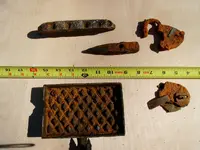
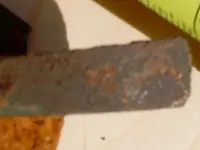
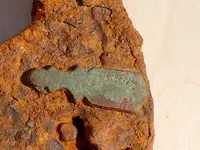
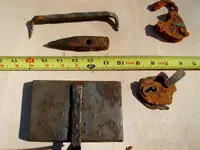

 I would say middle 19th century or earlyer, looking at the locks.Is that really a gold ring you found there?post it again if so.Is that a mold top left?nice old finds
I would say middle 19th century or earlyer, looking at the locks.Is that really a gold ring you found there?post it again if so.Is that a mold top left?nice old finds